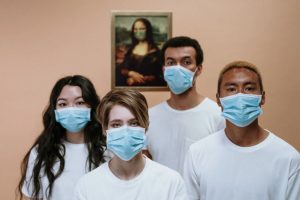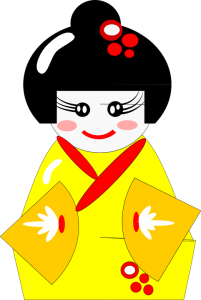We received a question from a customer asking why kimono and yukata are offered at different prices. There are many reasons why a Japanese robe is priced the way it is. The most basic reason is that a retailer can pick and choose whatever price they want. As an example, let’s look at two stores. The ABC store sells a widget for $10.00 while the XYZ store offers the same product for $15.00. It’s a choice each store owner makes and there are a variety of reasons for this.
The ABC Store may buy larger quantities from the manufacturer and receive a lower cost or discount for the volume purchase. They may have lower shipping costs and maybe lower overhead. It could simply be that the ABC store feels they are making a reasonable profit at $10.00. Every retailer has their own reasons why they charge what they do. The XYZ store may pay more for rent and pay more for labor and sales staff.
Chopa Zen Home has been a leading online retailer of Kimono and Yukata robes since 1994. Our number one goal when we started was and still is to offer quality robes at reasonable prices. We don’t attempt to be the low-price leader, nor do we want to be the most expensive. Being the most expensive retailer doesn’t necessarily mean you have the highest quality and best product. Being in business since 1994 has provided us with a deep level of understanding, experience and knowledge about the kimono market in the USA.
We purchase our kimono clothing from experienced, reputable, high-quality providers. We have longstanding agreements and constantly strive to accommodate each other, maintain a successful partnership and a great working relationship. This philosophy has long endured and is a reason why we are still a successful provider of beautiful kimono robes today. We have seen many firms come and go over the last three decades, but we stick with and maintain the principals we started with. One question we ask ourselves regularly is, would we purchase a specific kimono at the price we offer it? The answer is yes, or we decide on a lower price or discontinue the item. There needs to be a reasonable profit or no retailer stays in business. Businesses have overhead including the cost of goods, advertising, utilities, rent, labor, taxes, insurance, duties, shipping and an array of other costs.
Pricing has a lot to do with the fabric. Obviously a nicer, richer and heavier fabric costs more to produce a robe than a lesser quality material. This is how our producers determine their costs, profit and asking prices. A retailer does the same. Sometimes we have two yukata that appear similar and are made with the same fabric but one costs $10.00 more than the other. The reason for this is usually tied to the cost of the fabric and mainly the printing and dyeing of the material. Solid colors are made by dying fabrics. Designs are made by printing on a dyed fabric. The more detailed the print, the costlier the end product is because there are more steps in printing, more time involved, more labor more dye or inks and this longer process adds up. A robe with one or two colors, not withstanding the underlying fabric will cost less to produce than one with 9 or 10 colors.
Sizing also plays a vital factor in determination of price. A size small uses one amount of fabric while an large uses more. Manufacturers will usually blend the cost between the first few sizes because a larger size may leave less cutting or material waste while the smaller may have more. Patterns can have an effect on the cost based on the cutting patterns. Some patterns must be cut a specific way for sewing, so the pattern isn’t lost or out of place. Wider sizes obviously cost more because more fabric is needed. Special collars, sleeves and other variables all play a part in pricing.
We recently shopped around to comparison shop and were surprised to see major price differences. A specific kimono was available at one online store for $69.00 while the same robe was offered at another for $129.00. Others listed the same robe at $89.00 and $99.00. This proves there are anomalies in the market place but seeing this wide of a variance proves that some retailers are simply overpricing. No matter what the shipping costs, labor and overhead, if one retailer can justify selling the robe for $69.00 and making a fair profit to stay in business, how can the one asking $129.00 justify that price?
Chopa stands behind its history, longevity, customer service and fair pricing. We have many repeat customers and receive many compliments and thank you letters throughout the year. This is not only gratifying to us, but it proves to us that we are Your Kimono Source for styles, variety, sizing and price. We offer easy returns if you are not satisfied with your purchase and are based and operated in the USA. We have made kimono shopping easy by taking the guesswork out of online shopping. When looking for a kimono, yukata or short length kimono or Happi Coat, Shop with Confidence, shop with Chopa Zen Home.







